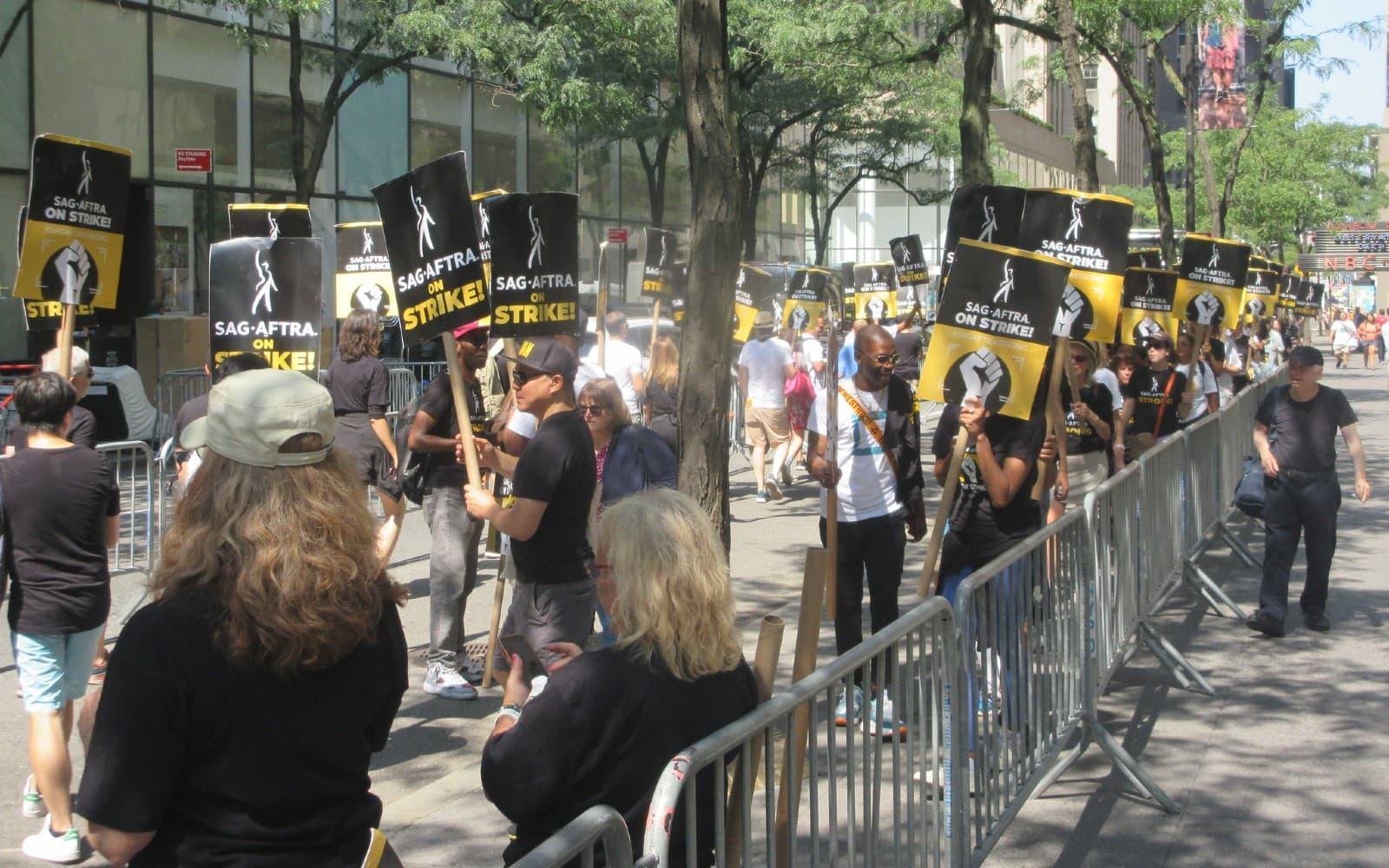
The Screen Actors Guild and the Hollywood studios have reached a tentative agreement, bringing the guild’s four-month-long strike to an end.
The two sides spent the last several days putting the finishing touches on the deal, which will see the first-ever protections for actors against artificial intelligence and a historic pay increase. The deal will see most minimums increase by 7% — two percent above the increases received by the Writers Guild of America and the Directors Guild of America.
The deal also includes a “streaming participation bonus,” according to an email sent to SAG-AFTRA members, as well as increases in pension and health contributions. The union said the contract is worth more than $1 billion in total.
“We have arrived at a contract that will enable SAG-AFTRA members from every category to build sustainable careers,” the union said in the email. “Many thousands of performers now and into the future will benefit from this work.”
I’ll confess, I thought the strike’s end was still quite a ways off. Just earlier this week, negotiations had broken down due to the studios’ creepy desire to own actors’ likenesses in perpetuity.
Per The Hollywood Reporter, the AMPTP’s newest contract would allow studios to secure the digitally scanned likenesses of all Schedule F performers — members of the guild making more than the minimum $32,000 / episode rate for series or more than $60,000 for feature films.
The AMPTP has been trying to get SAG-AFTRA on board with the idea of studios paying actors for their likenesses since the strike began earlier this year. Because this most recent proposal would allow studios to use digital scans of dead actors without the consent of their estates or the guild, however, SAG-AFTRA has refused and expressed its desire for changes that would require the studios to pay actors each time their faces are used and receive consent from those actors before doing so.
I’ve been keeping tabs on the ongoing SAG strikes partly for selfish reasons: the sooner the strike is over, the sooner I can see Dune: Part Two. But also, the strike and its subsequent negotiations have been a fascinating real world example of how AI is shaping our culture — as well as a stark example of studio and corporate greed. Or as Cynthia Littleton puts it:
Another important result of the labor contract cycle has been to ignite the conversation about the legal, moral and ethical lines to draw around generative artificial intelligence technologies. Instead of talking about tech in amorphous terms, the anger and discourse unleashed by the strikes forced Hollywood to discuss in fine detail how AI may affect the employment picture for creatives who work in copyright-based industries. The details of the SAG-AFTRA terms on AI will be studied no doubt as guideposts in the sea of litigation and public policy making that is now under way in the U.S. and around the world.
With the strike concluding, actors can now return to work, which includes promoting the films and TV series that they’ve worked on.